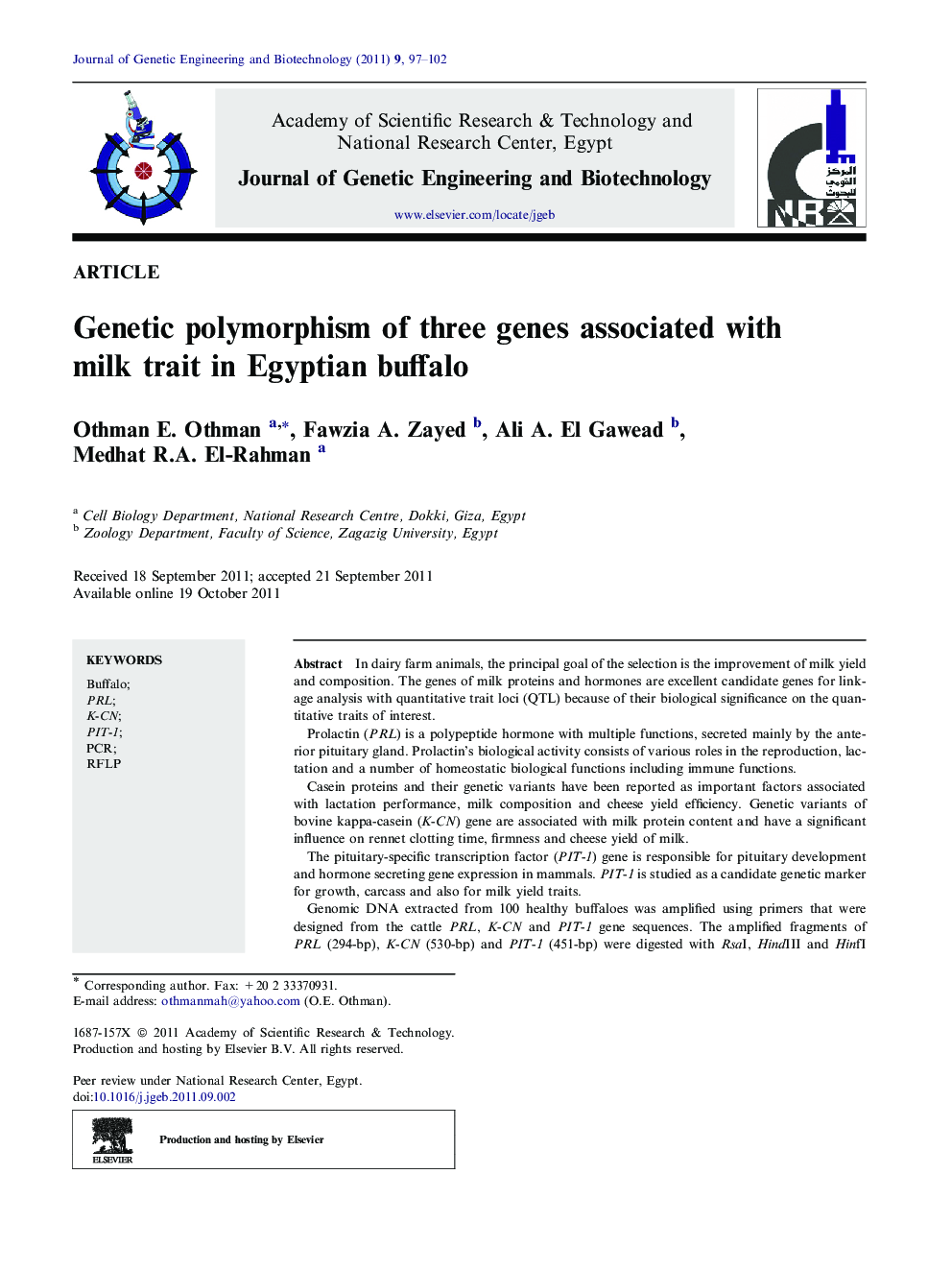| Article ID | Journal | Published Year | Pages | File Type |
|---|---|---|---|---|
| 2087955 | Journal of Genetic Engineering and Biotechnology | 2011 | 6 Pages |
In dairy farm animals, the principal goal of the selection is the improvement of milk yield and composition. The genes of milk proteins and hormones are excellent candidate genes for linkage analysis with quantitative trait loci (QTL) because of their biological significance on the quantitative traits of interest.Prolactin (PRL) is a polypeptide hormone with multiple functions, secreted mainly by the anterior pituitary gland. Prolactin’s biological activity consists of various roles in the reproduction, lactation and a number of homeostatic biological functions including immune functions.Casein proteins and their genetic variants have been reported as important factors associated with lactation performance, milk composition and cheese yield efficiency. Genetic variants of bovine kappa-casein (K-CN) gene are associated with milk protein content and have a significant influence on rennet clotting time, firmness and cheese yield of milk.The pituitary-specific transcription factor (PIT-1) gene is responsible for pituitary development and hormone secreting gene expression in mammals. PIT-1 is studied as a candidate genetic marker for growth, carcass and also for milk yield traits.Genomic DNA extracted from 100 healthy buffaloes was amplified using primers that were designed from the cattle PRL, K-CN and PIT-1 gene sequences. The amplified fragments of PRL (294-bp), K-CN (530-bp) and PIT-1 (451-bp) were digested with RsaI, HindIII and HinfI restriction enzymes, respectively. The results showed that all tested buffaloes are genotyped as GG for PRL, BB for K-CN and BB for PIT-1.
